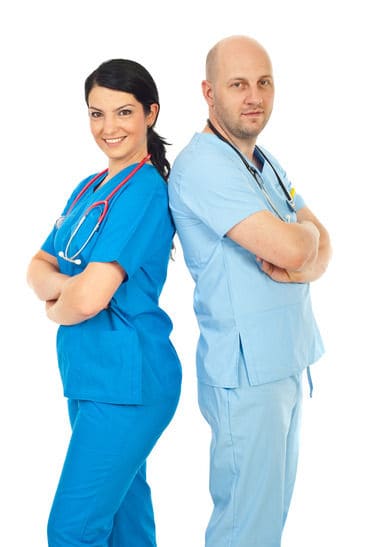

Massage therapy can play a tremendous role in people’s health and well-being. However, many physicians are not yet convinced of massage’s value. By choosing to educate one or several western medical doctors about how your practice could help theirs, massage therapists can kick-start a referral network as well as foster mutual respect between bodywork and western medicine.
Because our society places the onus of diagnosis, treatment and all other medical decisions on western-trained physicians, these providers are constantly trying to stay abreast of new ailments, theories, equipment and breakthroughs in their field. Surveys indicate that many physicians would like to know more about how Complementary and Alternative Medicine (CAM) could help their patients. However, most medical schools do not teach CAM segments and licensed practitioners rarely have the time or resources to sort between what is scientifically valid and folkloric quackery.
Doctors Are Interested
As published online in Medical Teacher, the International Journal of Education in the Health Sciences, researchers from the U.S., United Kingdom and New Zealand surveyed medical students’ attitudes toward complementary therapies during their first and fourth year of medical training. According to Hakima Amri, Ph.D., director of the CAM Program at Georgetown University Medical Center, and co-investigator and lead author of the U.S. component of the study, “The first study we conducted with first-year medical students indicated that overall, students wanted more information about CAM in their curriculum.”
According to the Australian Association of Massage Therapists, if general practitioners (GP) better understand massage, how it can benefit their patients and who to refer to, the work opportunities for massage therapists and the status of the industry within the community will be raised. Marc Cohen, Professor of Complementary Medicine, School of Health Sciences, Royal Melbourne Institute of Technology University says, “There’s a lot of evidence to say GPs already think very highly of massage – they think it’s very safe and effective but they don’t know how to implement it with their patients. They don’t know who to refer to. They don’t necessarily know the qualifications of massage therapists, or that there are standards, insurance and a high level of professionalism within that industry. There’s a real need for GP education.” Cohen also said, “We did a survey of GPs and their use of complementary medicines and therapies and found massage was the most commonly used – 24 percent of GPs had had a massage in the last year.”
Ideas for Bridging the Medical Gap
Since most physicians admittedly want to know more about CAM therapies that could help their clients, massage therapists are in the prime position to educate them. Based on suggestions from US-based therapist Charlotte Michael Versagi, LMT, NCTMB, founder of the Hospital-Based Massage Network and Professor Cohen, some ideas for reaching out to physicians include:
- Make Contact – Don’t expect doctors to come knocking on your door to evaluate your massage skills. Because it is hard for doctors to refer to people they don’t know, personal contact must be made with local physicians.
- Give a Physician a Massage – Recognizing the value of massage therapy is best accomplished by experience. After contacting your local physician, offer her or him a free massage. As a valid marketing expense, a bodyworker can write the free session off while assuring the doctor that he or she knows what he or she is doing.
- Be Respectful – Conceptualize massage therapy as a complementary medicine, not as an alternative to conventional treatment. A massage therapist wanting to work with physicians needs to approach the doctor from the standpoint of what he or she can add to what the doctor is already doing, not suggest the physician should use massage instead. While respect is paramount to fostering this relationship, simultaneously maintain your self-confidence about yourself and your work.
- Know the Language – Communicating intelligently with a physician about patient care means being able to understand and speak about the medical conditions at play. In order for physicians to trust bodyworkers and thus refer to them, they must recognize that the therapist has a basic understanding of the pathology and physiology their clients present with.
- Translate Massage Into Their Terms – Be able to explain the benefits of massage from a western medical perspective. Emphasize quantifiable phenomena such as enhanced range of motion instead of introducing foreign concepts like promotes energy flow. In addition, bring some literature containing several studies or articles about massage therapy that were written by physicians. Even if they don’t take the time to read your literature, they’ll glance through them and see that other doctors support your line of work.
Reaching out to and educating physicians is within the grasp of most massage therapists. By refusing to be intimidated by western medical professionals, being respectful, marketing yourself, communicating intelligently and sharing valuable information, bodyworkers can effectively widen their referral network to include local physicians. Consequently, such efforts will reflect on the profession as a whole by helping to shape perspectives of massage therapy as a valuable component of healthcare.
[php]
show_banner_ad(215);
[/php]
Recommended Study:
Advanced Anatomy and Pathology
Developing a Wellness Center
Ethics: Practice Management











